Nicholas Mangan Termite Economies: Phase 2 (Metabolic Shift)
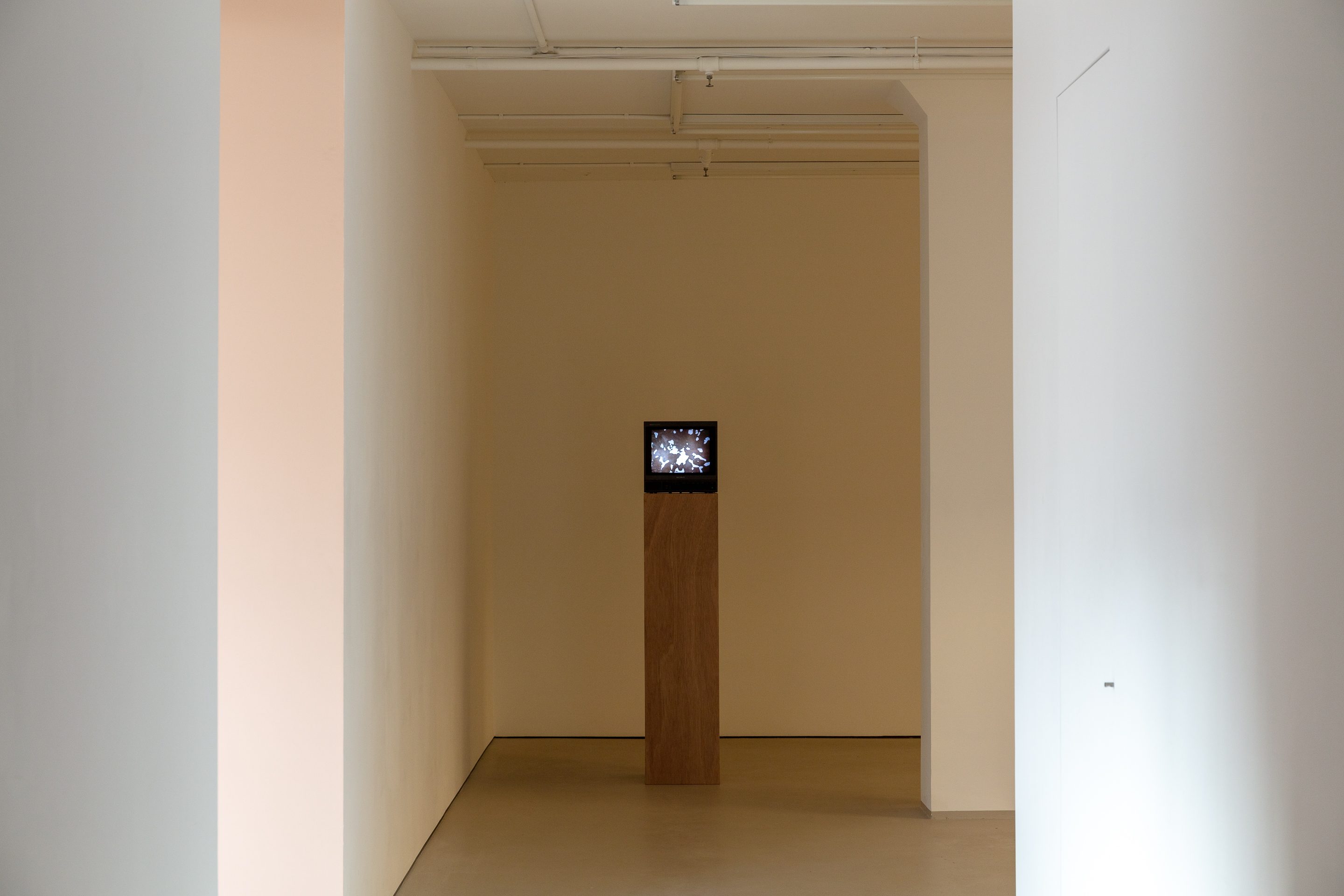
Nicholas Mangan
Termite Economies: Phase 2 (Metabolic Shift), 2019
installation view: Hopkinson Mossman, Wellington
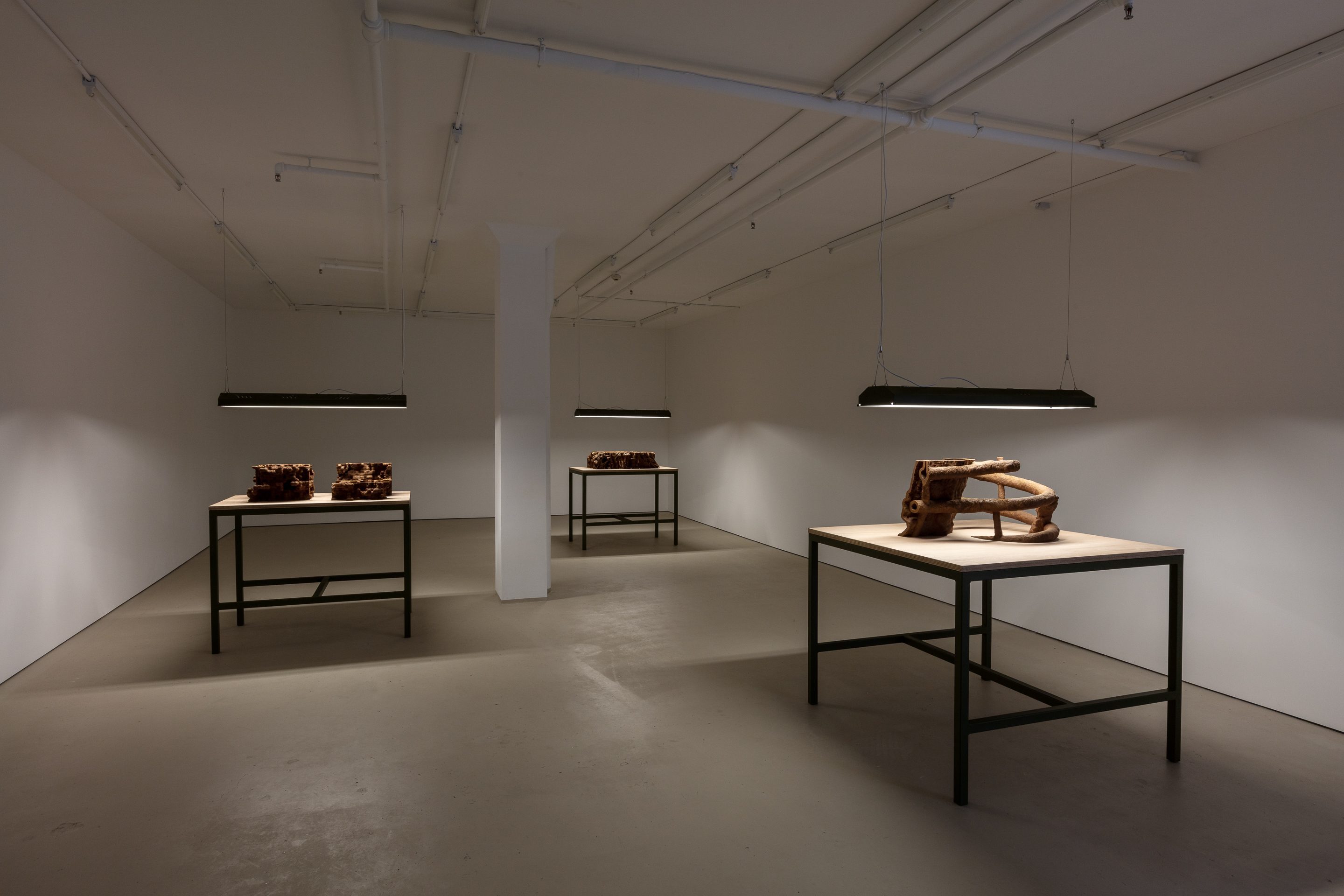
Nicholas Mangan
Termite Economies: Phase 2 (Metabolic Shift), 2019
installation view: Hopkinson Mossman, Wellington
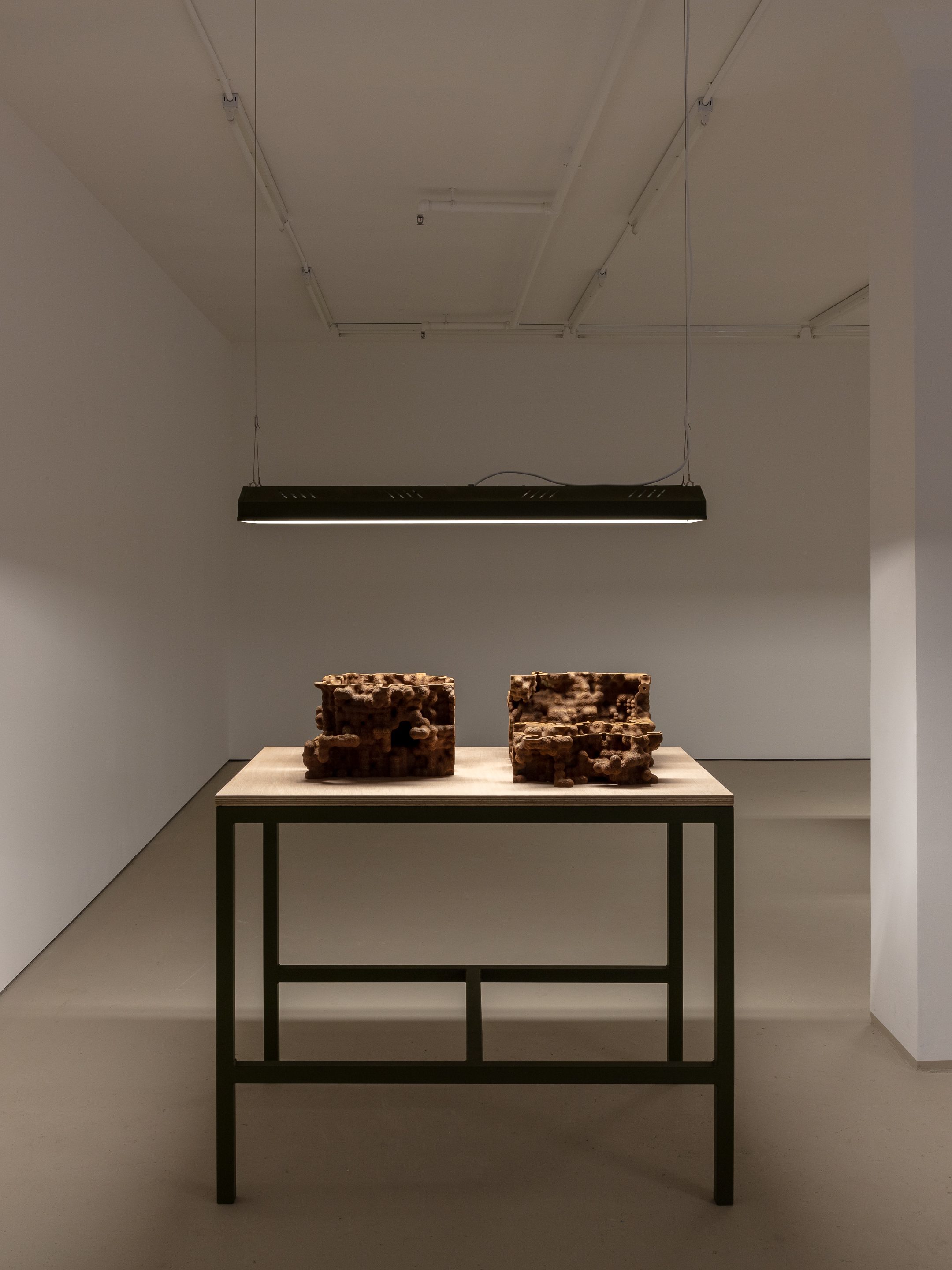
Nicholas Mangan
Termite Economies: Phase 2 #1, 2019
ceramic powder, gypsum, cyrilinate, acrylic paint, steel, plywood, fluorescent light
250 x 400 x 400mm and 250 x 550 x 400mm / 1650 x 1200 x 750mm overall
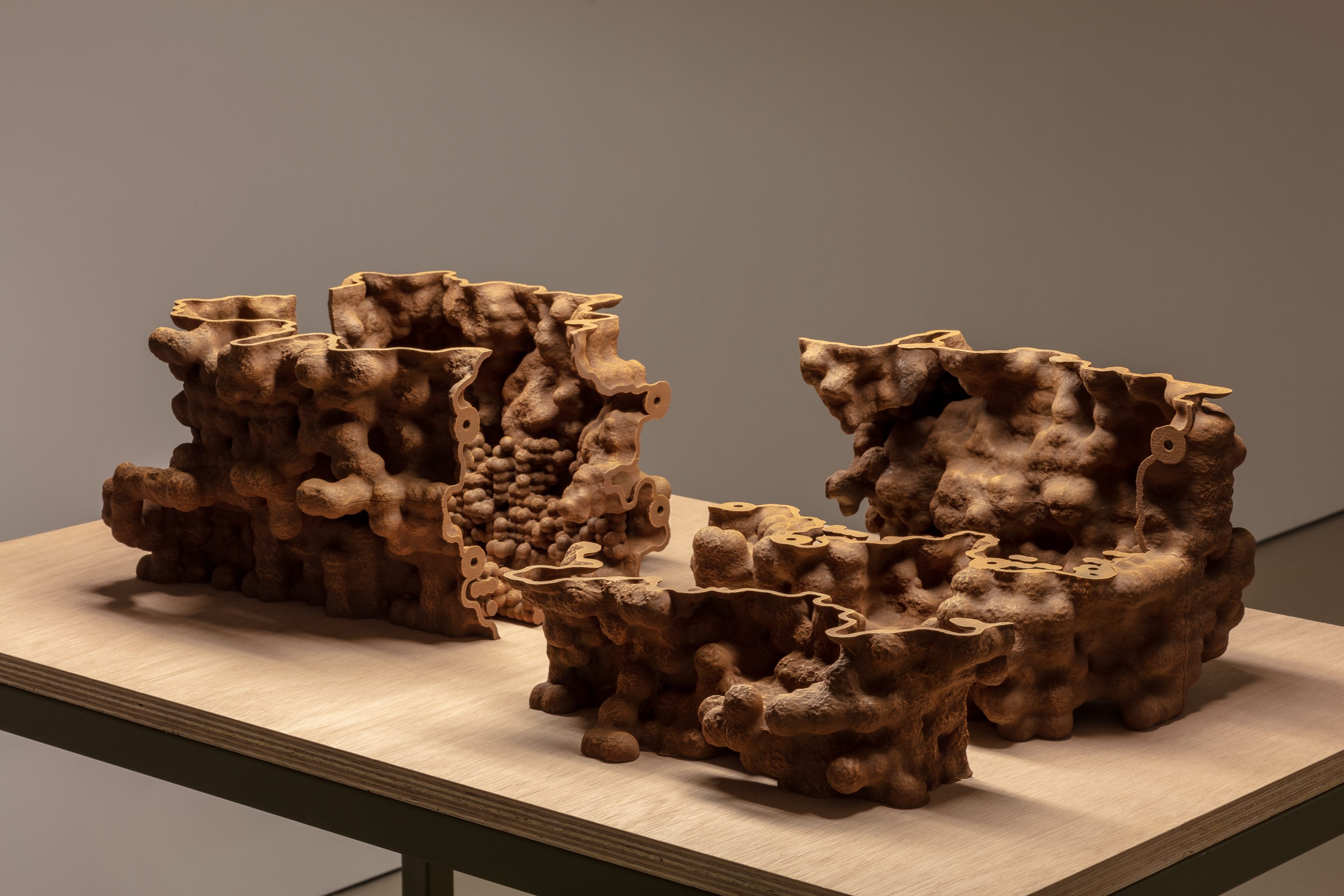
Nicholas Mangan
Termite Economies: Phase 2 #1 (detail), 2019
ceramic powder, gypsum, cyrilinate, acrylic paint, steel, plywood, fluorescent light
250 x 400 x 400mm and 250 x 550 x 400mm / 1650 x 1200 x 750mm overall

Nicholas Mangan
Termite Economies: Phase 2 #1 (detail), 2019
ceramic powder, gypsum, cyrilinate, acrylic paint, steel, plywood, fluorescent light
250 x 400 x 400mm and 250 x 550 x 400mm / 1650 x 1200 x 750mm overall
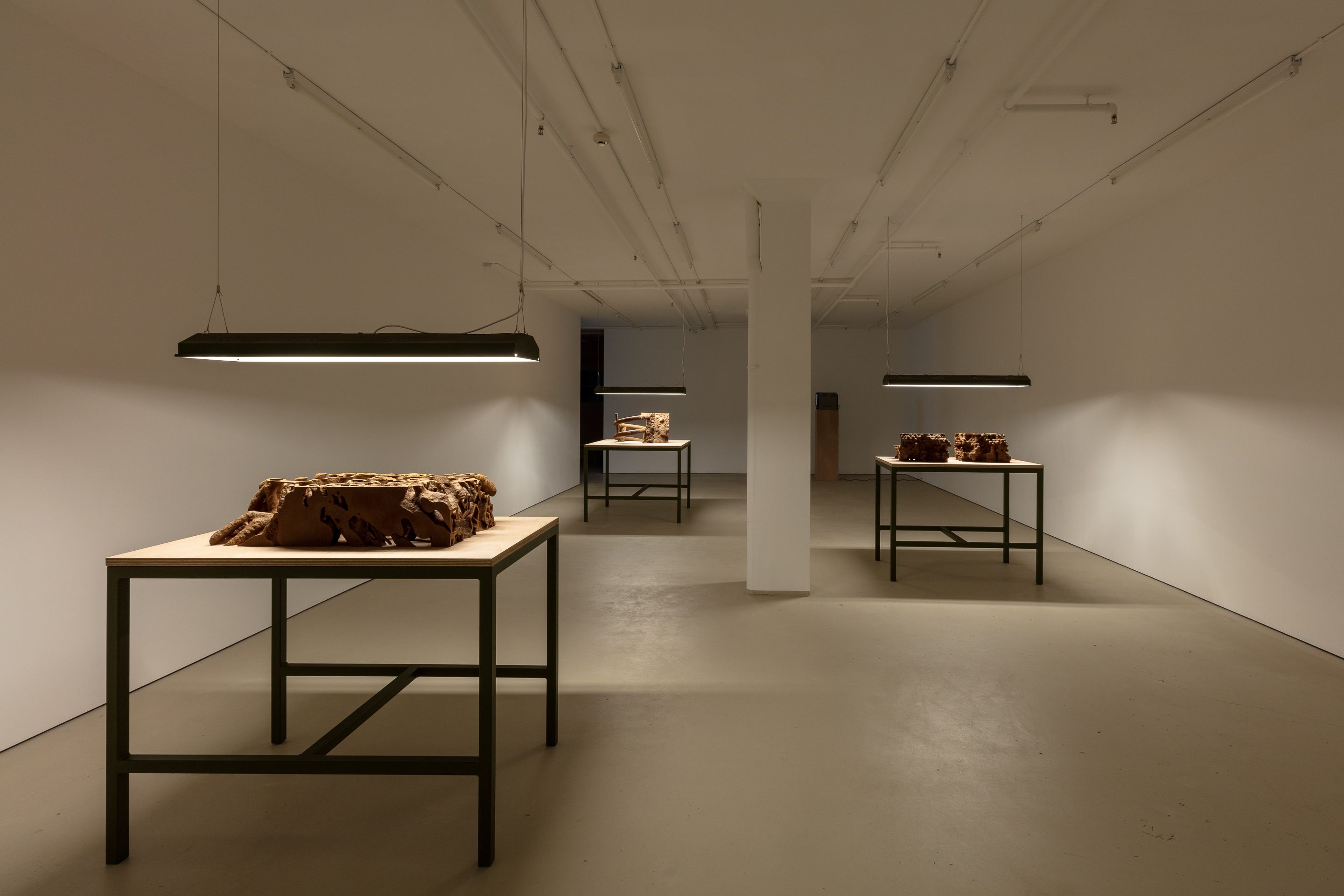
Nicholas Mangan
Termite Economies: Phase 2 (Metabolic Shift), 2019
installation view: Hopkinson Mossman, Wellington
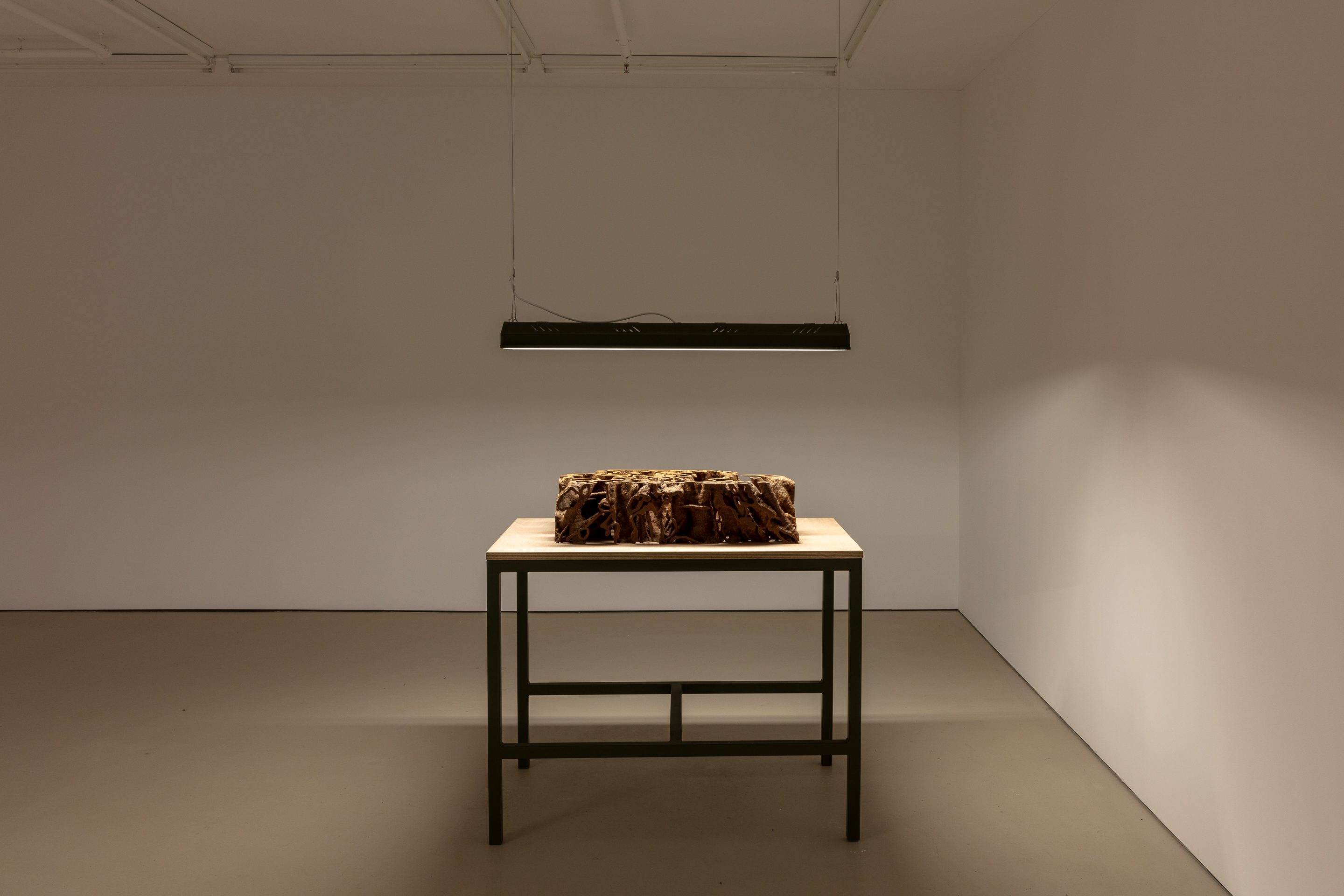
Nicholas Mangan
Termite Economies: Phase 2 #3, 2019
polymethyl methacrylate, resin, acrylic paint, steel, plywood, fluorescent light
210 x 800 x 4500mm / 1650 x 1200 x 750mm overall
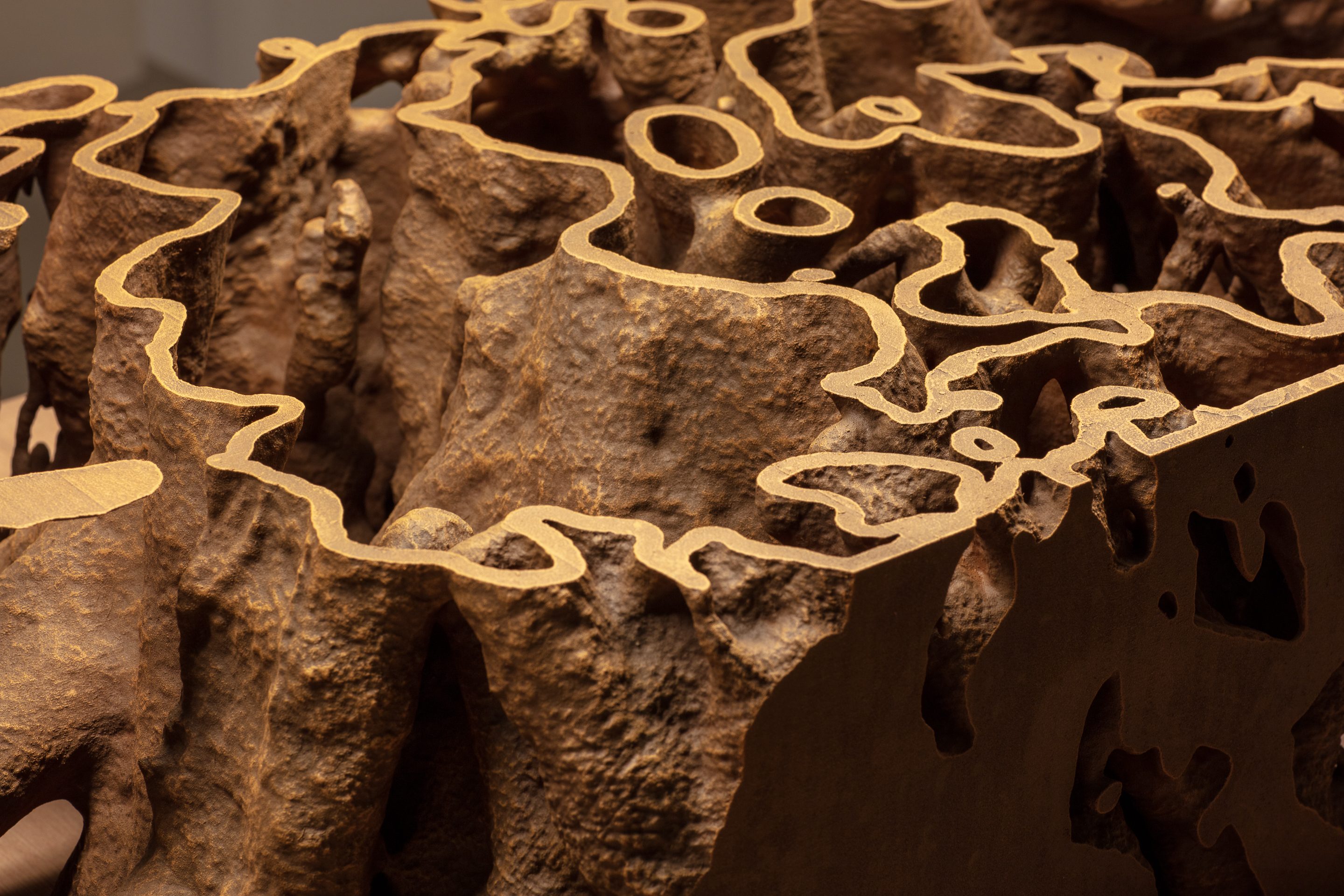
Nicholas Mangan
Termite Economies: Phase 2 #3 (detail), 2019
polymethyl methacrylate, resin, acrylic paint, steel, plywood, fluorescent light
210 x 800 x 4500mm / 1650 x 1200 x 750mm overall
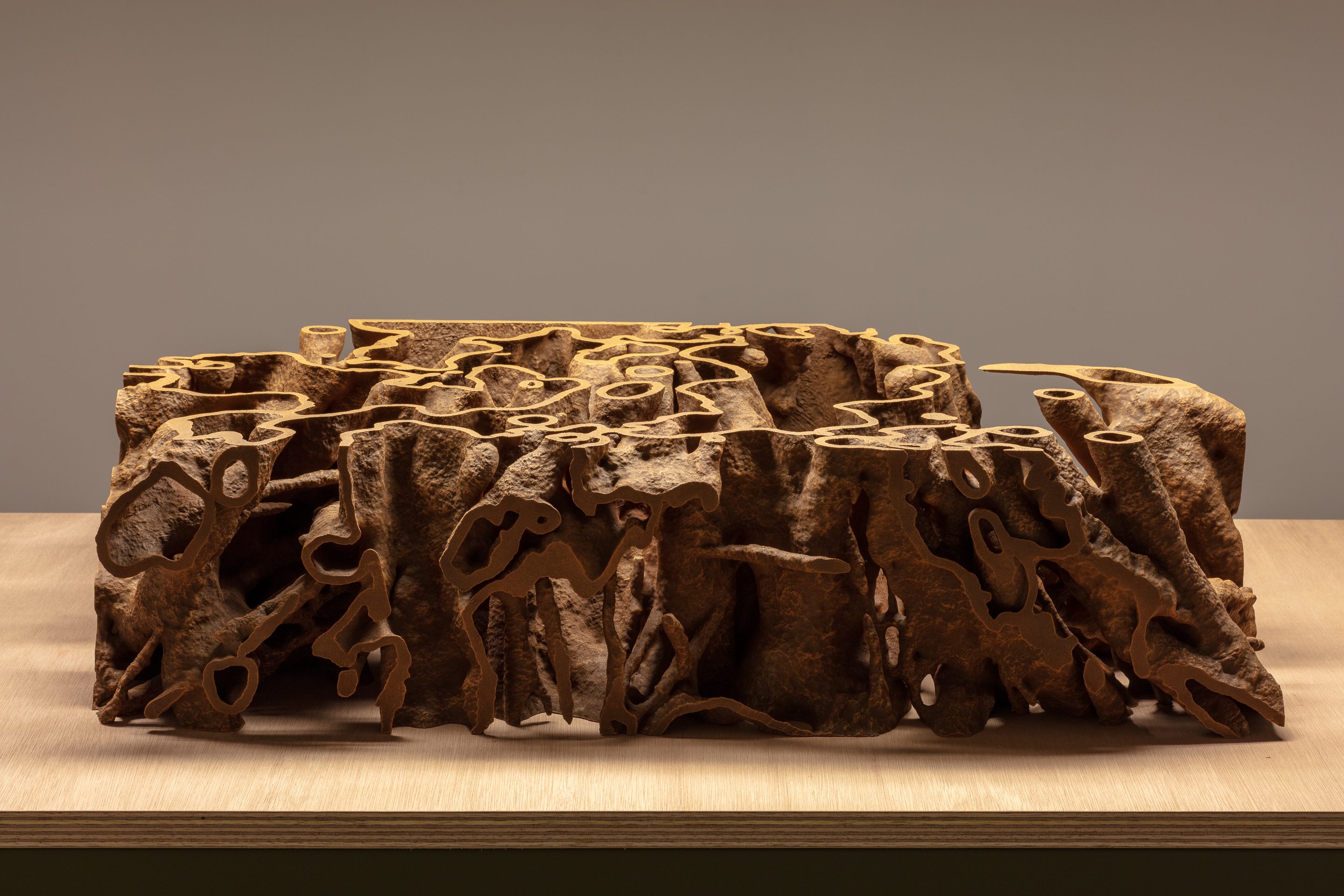
Nicholas Mangan
Termite Economies: Phase 2 #3, 2019
polymethyl methacrylate, resin, acrylic paint, steel, plywood, fluorescent light
210 x 800 x 4500mm / 1650 x 1200 x 750mm overall
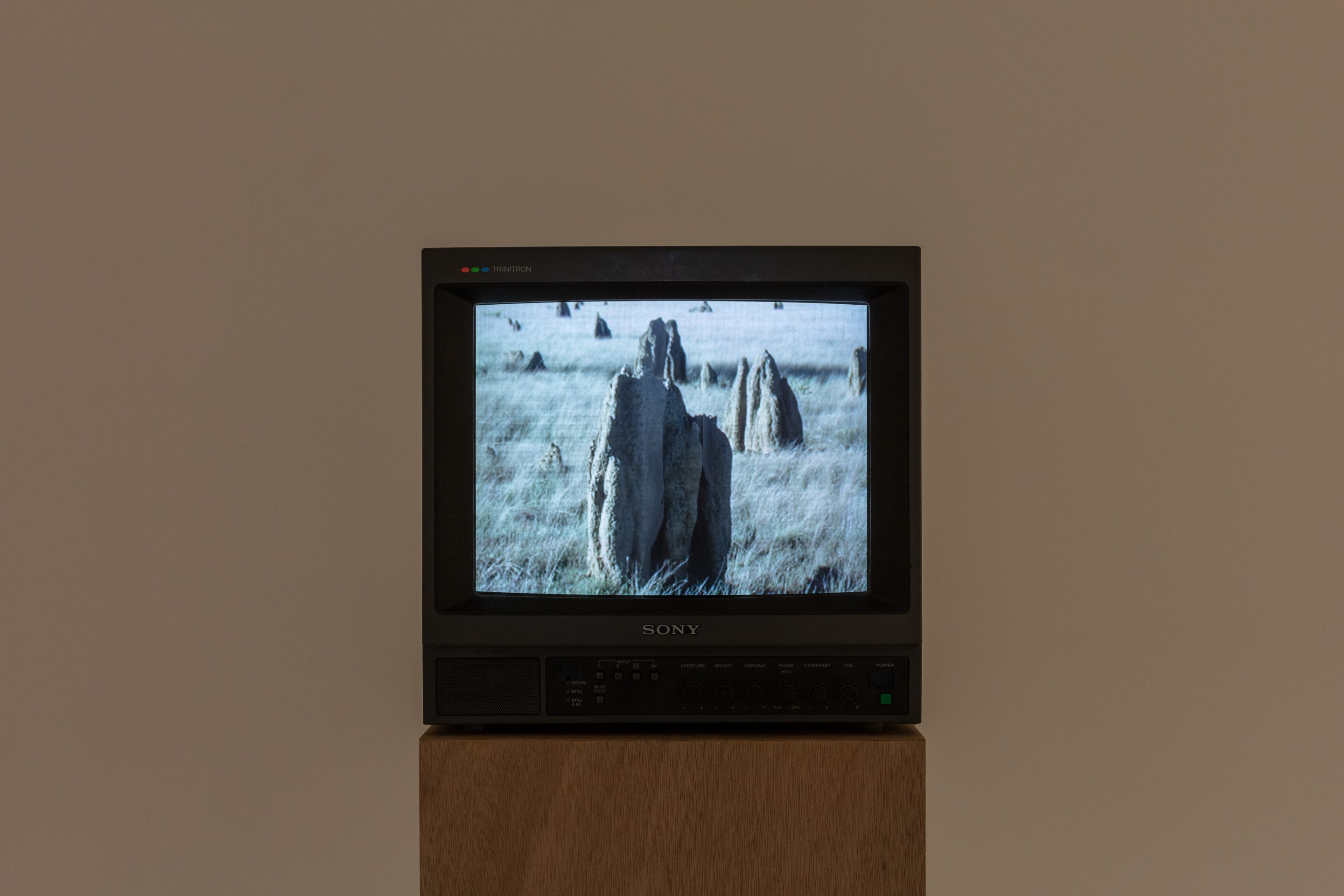
Nicholas Mangan
Termite Economies: Phase 2, 2019
SD 4.3 2:25 min, continuous loop, sound
ed. 1/1
plinth: 1350 x 320 x 450mm, monitor: 330 x 250 x 400mm
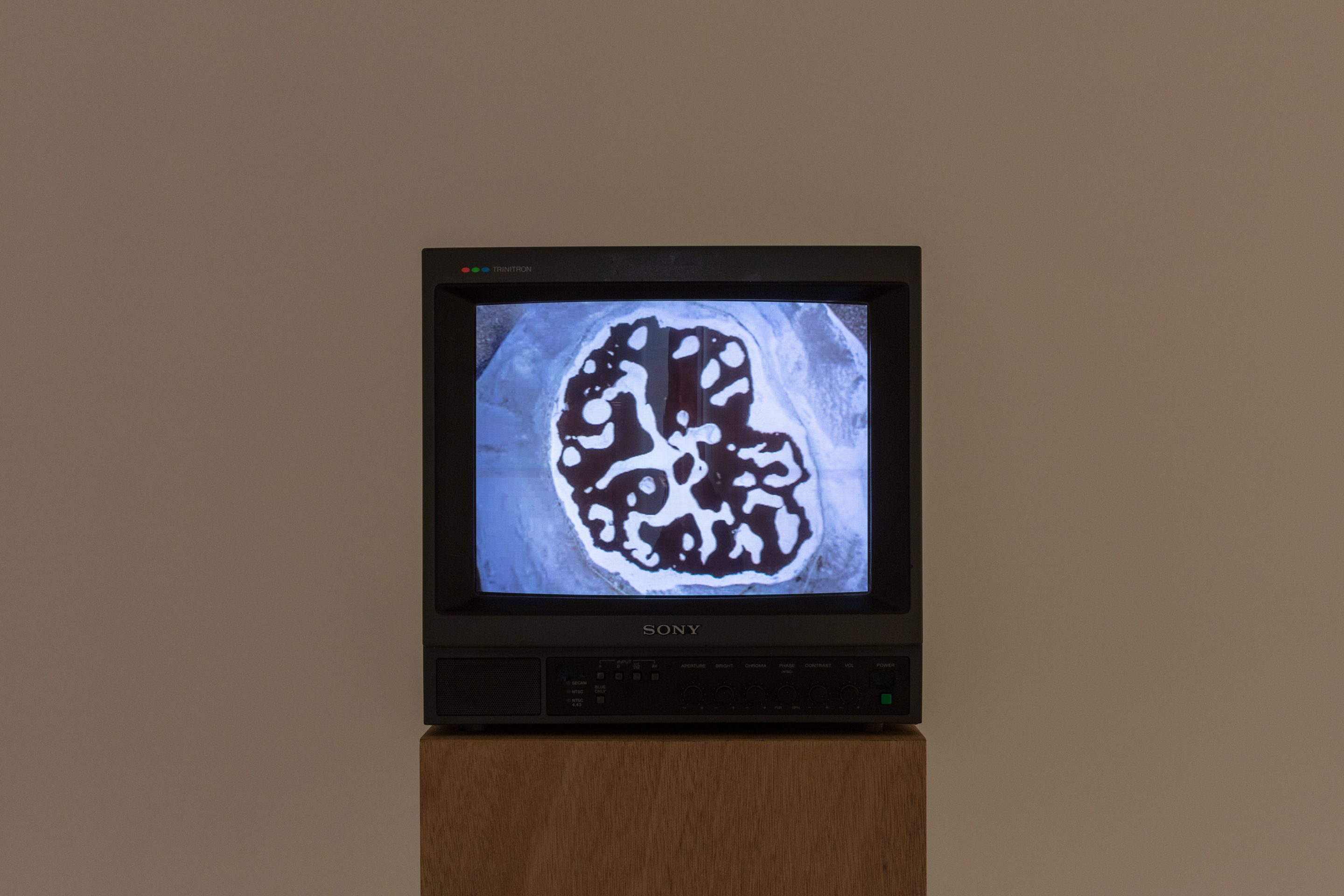
Nicholas Mangan
Termite Economies: Phase 2, 2019
SD 4.3 2:25 min, continuous loop, sound
ed. 1/1
plinth: 1350 x 320 x 450mm, monitor: 330 x 250 x 400mm
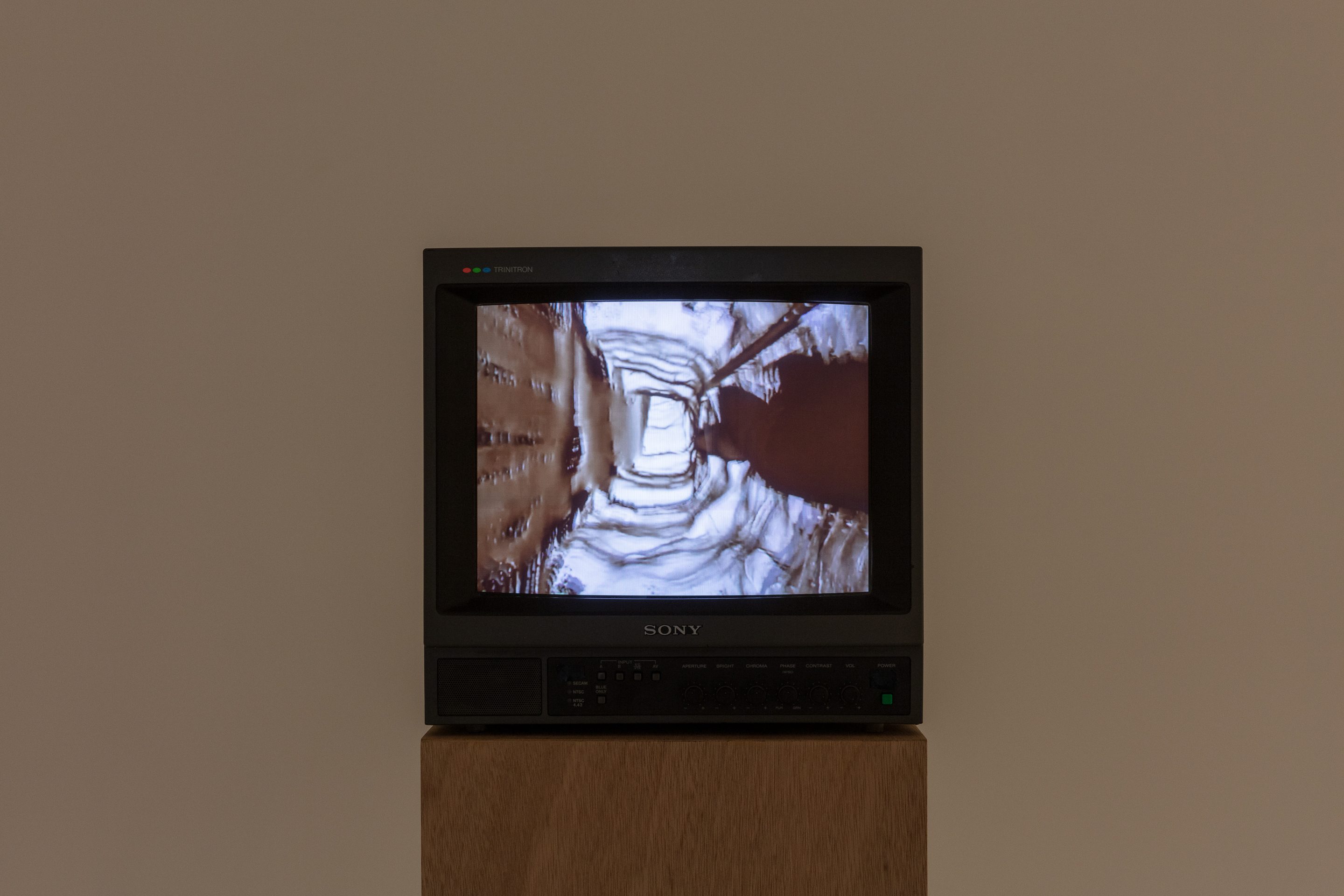
Nicholas Mangan
Termite Economies: Phase 2, 2019
SD 4.3 2:25 min, continuous loop, sound
ed. 1/1
plinth: 1350 x 320 x 450mm, monitor: 330 x 250 x 400mm

Nicholas Mangan
Termite Economies: Phase 2 (Metabolic Shift), 2019
installation view: Hopkinson Mossman, Wellington
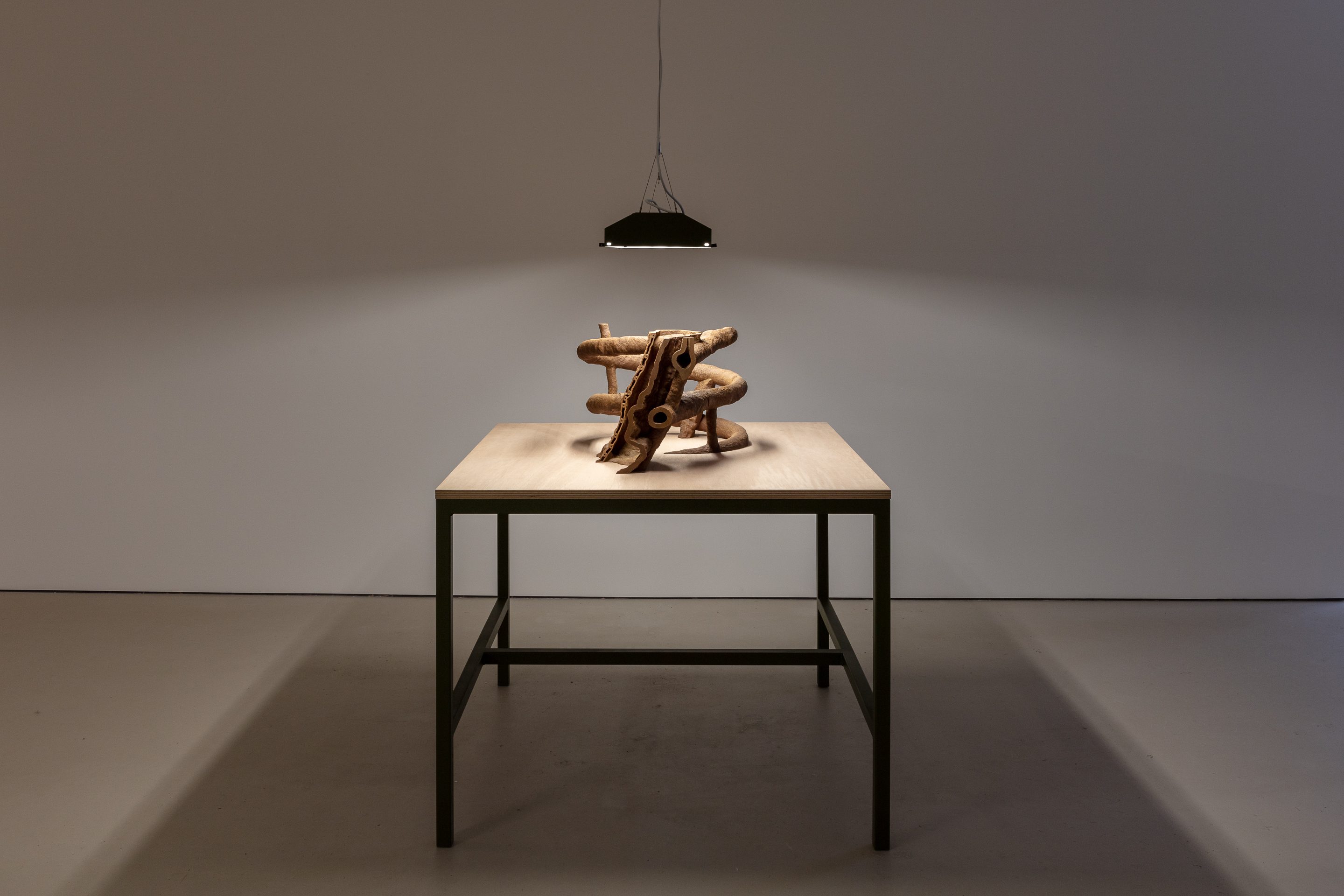
Nicholas Mangan
Termite Economies: Phase 2 #2, 2019
ceramic powder, gypsum, cyrilinate, acrylic paint, steel, plywood, fluorescent light
400 x 750 x 650mm / 1650 x 1200 x 1200mm overall

Nicholas Mangan
Termite Economies: Phase 2 #2 (detail), 2019
ceramic powder, gypsum, cyrilinate, acrylic paint, steel, plywood, fluorescent light
400 x 750 x 650mm / 1650 x 1200 x 1200mm overall
Nicholas Mangan
Termite Economies: Phase 2 (Metabolic Shift)
04 Jul – 16 Aug 2019
Hopkinson Mossman is pleased to present Termite Economies: Phase 2 (Metabolic Shift), a solo exhibition of new work by Nicholas Mangan.
Nicholas Mangan’s work draws from both recent history and deep time to tease out narratives of the rise and fall of civilizations – of ambition, construction, rupture and decay – and, more recently, the relationship between energy and social transformation.
The second phase of the larger Termite Economies project begins with anecdote from science; a hypothesis from entomologists that the sophisticated chemical communications of termites could be mobilised to locate rare earth minerals, such as gold and copper. This specific (and ultimately futile) example of the exploitation of nature for economic gain is for Mangan a point of departure, a place to start digging.
Termite Economies: Phase 2 (Metabolic Shift) includes three major new sculptural works that synthesize a number of engineering structures, both human and termite, into a hybrid speculative architecture. The sculptures are accompanied by a small boxy monitor screening a filmic vignette; a montage of archival footage from a 1960’s CSIRO documentary called “The Colony”, field research images of a cross-sectioned Macrotermes termite mound in Namibia, a point-cloud scan of an underground mine tunnel system, and artist’s footage of termite mounds in Western Australia.
The sculptures in Termite Economies: Phase 2 (Metabolic Shift) reproduce cross sections of the accreted dirt and saliva that form termite mounds, combined with various models of looping gold mine-shafts. Some sculptures are rhizomal in structure, and resemble maps of muscle or brain tissue, while others feel directional, or entropic. Brown and roughly textured with dirt, the sculptures appear organic, but they are in fact impossible objects, rendered on screen and produced using advanced 3D printing technology. For the installation at Hopkinson Mossman the gallery is darkened and each sculpture has a ‘grow lamp’ hovering above it, giving the viewer the sense that they are traversing a field-laboratory after an excavation.
Working in a long and diverse history of employing insects as allegory for human activity, Mangan’s Termite Economies project is a fiction of engineering. Considered as a ‘living’ structure, that is highly receptive and constantly adapting to the activity of its inhabitants, the termite mound is mobilised as model for thinking about connectivity, collective action, labour, and consumption. Interrogating the already uneasy dynamic between nature and culture, Termite Economies: Phase 2 (Metabolic Shift) attempts to open new understandings of the structures and systems that govern our environment.
Nicholas Mangan (born 1979) lives and works in Melbourne, where he is senior lecturer at Monash University. Recent solo exhibitions include: Limits to Growth, Monash University Museum of Art (MUMA), Melbourne, the Institute of Modern Art (IMA), Brisbane, Kunst-Werke Institute of Contemporary Art, Berlin, Dowse Art Museum, Wellington (2016); Ancient Lights, Chisenhale Gallery, London, (2015); Some Kinds of Duration, Centre for Contemporary Photography, Melbourne, (2012). His work has been included in major international exhibitions including: Biennale of Sydney, Sydney (2018); Let’s Talk About the Weather: Art and Ecology in A Time of Crisis, Guangdong Times Museum, Guangzhou (2018); 74 million million million tons, Sculpture Center, New York (2018); The National 2017: new Australian art, AGNSW, Sydney (2017); 4.543 BILLION. The Matter of matter, CAPC, Bordeaux, (2017); New Museum Triennial: Surround Audience, New York (2015); 9th Bienal do Mercosul, Porto Alegre (2013); and the 13th Istanbul Biennial (2013).
Termite Economies: Phase 2 (Metabolic Shift) is Mangan’s third solo exhibition at Hopkinson Mossman, preceded by A world undone in 2012, and Nauru, Notes from a Cretaceous World in 2010.